
Our Plants
Welcome to the North Creek plant catalog! Here you will find information on our perennials, grasses, ferns and shrubs. You can view plants by either common or botanical name and sort the list by plant type. Click on a thumbnail image to see detailed information about that particular plant.
If you are looking for just the right plants to grow, use our Plant Search to find plants with particular characteristics.
Note: We endeavor to err on the side of caution when listing zone information. Where noted plants may be hardier than listed.
Achillea 'Moonshine'yarrow
Silver foliage with 3' tall stems topped with broad, sulfur-yellow flower heads. A hybrid of A. x 'Taygeta' and A. clypeolata, introduced by Alan Bloom in the 1950s. An excellent choice for a hot dry site, especially if it's windy. A beautiful cut flower! [
More Info
]
|
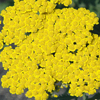
|
Achillea 'Terracotta'yarrow
Another fine Ernest Pagels introduction. Pronounced silvery foliage and sturdy stems supporting bright peach flowers that slowly turn to rich hues of earthy reds and oranges. An excellent cut flower! [
More Info
]
|
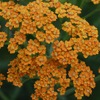
|
Achillea millefoliumyarrow
Naturalized yarrow has soft fern-like leaves that provide textural interest in the garden with soft white blooms in summer and occasionally into fall. Beloved by pollinators, yarrow spreads by rhizome and can be trained to be a full sun native lawn substitute. [
More Info
]
|
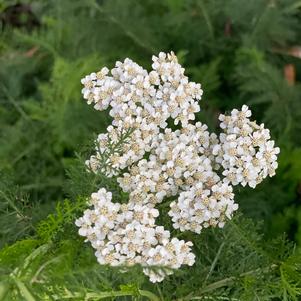
|
Achillea millefolium 'Oertel's Rose'yarrow
Common yarrow is a carefree garden plant that spreads easily to fill available space. 'Oertel's Rose' is rosy pink with good strong color that is slow to fade. [
More Info
]
|
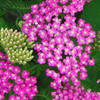
|
Achillea millefolium 'Paprika'yarrow
Intense red flowers surround bright yellow centers. This Achillea is a vigorous grower that will quickly form a dense weed-blocking mat. It is one of the most floriferous of the Achillea cultivars, presenting a solid block of red in early summer. An easy and rewarding production plant, it has very few pest or pathogen problems. [
More Info
]
|
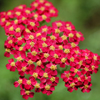
|
Agastache 'Blue Fortune'hyssop
Selected for its profusion of long lasting, deep violet-blue flower spikes that appear from July to September above fragrant foliage. Prefers average to dry locations and is a butterfly magnet! Bred and selected by Gert Fortgens of the Arboretum Trompenberg, in Rotterdam. Agastache 'Blue Fortune' is long flowering, heat and drought tolerant, as well as insect and disease resistant. 'Blue Fortune' is a hybrid of species native to the US and Korea, A. foeniculum x A. rugosa. [
More Info
]
|
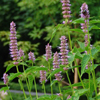
|
Agastache 'Golden Jubilee'hyssop
Definitely a WOW! plant. Chartreuse, Coleus-like foliage is incredible on its own, but the blue bottlebrush flowers in mid summer top it off beautifully. Very hardy and will self sow. Benefits from a little shade in production to protect leaf color. A 2003 All-America Selection Flower Award Winner. [
More Info
]
|
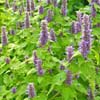
|
Agastache foeniculumanise hyssop
An upright, clump-forming perennial native to parts of the upper Midwest and Great Plains region. Lavender to purple flowers are densely packed along showy, cylindrical, terminal spikes mid to late summer. Medium green, lanceolate foliage remains clean throughout the season and carries a refreshing anise scent, attracting hummingbirds and butterflies. [
More Info
]
|
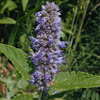
|
Agastache rugosa 'Little Adder' PP26514anise hyssop
A new and distinct cultivar from Darwin Perennials that is characterized by its medium violet-purple flowers, dark green foliage, and moderately vigorous, upright-mounded growth habit. In side-by-side comparisons with its cousin, Agastache ‘Black Adder’, A. ‘Little Adder’ sits a little lower in the perennial border and exhibited a better-branched habit. [
More Info
]
|
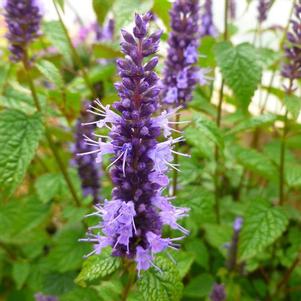
|
Alchemilla mollis 'Auslese'lady's-mantle
Green to bright chartreuse flowers appear in clusters above scalloped, grey-green foliage from late spring through summer. Robust and vigorous, Alchemilla mollis 'Auslese' prefers full sun to part shade and has a wonderfully uniform habit. [
More Info
]
|
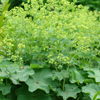
|
Allium cernuumnodding onion
Found on ledges, in dry meadows, gravel, rocky or wooded slopes, this delicate onion has gently nodding pink flowers in late spring. Beautiful in the garden or naturalized in a meadow. Easy, dependable and very drought tolerant once established.
[
More Info
]
|
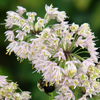
|
Amsonia 'Blue Ice'bluestar
This long-blooming, compact Amsonia forms a dense, compact mound of dark green leaves that turn brilliant yellow in the fall. Looks fantastic in a gallon! [
More Info
]
|
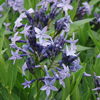
|
Amsonia hubrichtiithreadleaf bluestar
A graceful and long-lived native plant with very fine foliage, clusters of steel blue flowers in May and June on an upright, bushy plant. Excellent golden fall color. Thrives in full sun or part shade. No insect or pest problems. Found in Arkansas in 1942 by Leslie Hubricht. [
More Info
]
|
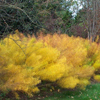
|
Anemone canadensisCanadian anemone
A strong-growing plant that needs room to move. Clear white single flowers top out at 18" from mid spring to early summer. A robust and competitive native plant that brightens up woodland edges and shady corners of the garden. Combines well with other spring-blooming perennials such as Polemonium, Sisyrinchium and Mertensia. [
More Info
]
|
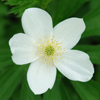
|
Anemone Fantasy™ 'Pocahontas' PP25352anemone
Covered in double flowering, bubblegum pink blooms from mid to late summer! The seed heads look like little fluffy cotton balls, standing atop strong stems to give interest to the garden from fall into winter. This vigorous, clumping selection is a delight in the garden or mixed container. [
More Info
]
|
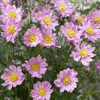
|
Anemone sylvestrissnowdrop windflower
Delicate, nodding white flowers bloom early to mid spring atop lustrous dense, green foliage. A low maintenance groundcover for bright shade! Easy to grow in containers, overwinters well in cold frames if protected from heavy rain and snow melt. [
More Info
]
|
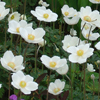
|
Anemone × hybrida 'Honorine Jobert'Japanese windflower
This stately, clear-white Anemone selection was made in the mid-1800's and is still beloved by the modern gardener. Perhaps it is the charm of its unique flowers and preblooms in late summer or the joy of watching its easy sway in the late summer breeze. Ultimately, we love it because it is an effortless and reliable presence in the garden. Whatever the reason that you fall in love with 'Honorine Jobert' know that it is a timeless classic. [
More Info
]
|
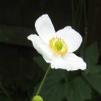
|
Anemone × hybrida Wild Swan™ 'MACANE001' PP23132anemone
Anemone × hybrida Wild Swan™ 'MACANE001' is a long-blooming, compact, floriferous new anemone with lovely lavender coloration on the reverse side of the petals. Wild Swan begins flowering an average of two months earlier than other varieties and keeps on trucking until the end of the season. Flowers are held high and proud, allowing them to catch gently on the breeze. A graceful beaut to be sure! [
More Info
]
|
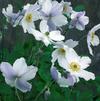
|
Antennaria plantaginifoliapussytoes
Looking for a tough groundcover that thrives in full sun, dry, and lean soils? Need it to be low-growing with an attractive but discrete foliage? Then, look no further. Antennaria plantaginifolia fills that niche with style. Native to the eastern United States, this little plant is great in an open woodland edge, rocky slope, rock gardens, or prairie. [
More Info
]
|
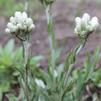
|
Aquilegia canadensiswild columbine
Red flowers with yellow centers hang like drifts of softly illuminated lanterns in April and May. Excellent as a shady rock garden naturalizer, it also is quite content in average garden conditions. Occurs naturally in rich rocky woods, north-facing slopes, cliffs, ledges, pastures, and roadside banks. Native to all states east of the Rockies, but not found in Louisiana. [
More Info
]
|
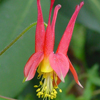
|
Aquilegia canadensis 'Corbett'wild columbine
Profuse show of butter-yellow, lantern-shaped flowers from April to May. Its short stature, delicate color and mid spring bloom time make it an ideal companion for spring bulbs! It was spotted by Lawrence Clemens who asked that it be named after the Corbett Historic District which is near Monkton in Baltimore County, Maryland. Bluemount Nurseries, of Monkton, MD was the first to offer this charming local Aquilegia to the market. [
More Info
]
|
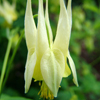
|
Aquilegia canadensis 'Little Lanterns'dwarf wild columbine
'Little Lanterns' is short in stature, but free with flowers! Numerous pendant flowers of red and yellow cover the plant in late spring. This selection resolves a few grievances that some have expressed about Aquilegia canadensis by having consistantly shorter stature and more intense color than the species. [
More Info
]
|
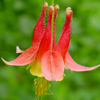
|
Aruncus dioicusgoat's beard, bride's feathers
A fantastic native with large, fine-textured feathery blooms in late Spring. Though closely related to Spiraea, goat's beard more closely resembles a giant Astilbe. When happy, Aruncus can be a formidable garden plant, reaching a spread of 6 feet or more. It is lovely when used at woods edge and it can provide a dense screen beneath a high canopy. [
More Info
]
|
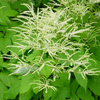
|
Asclepias incarnataswamp milkweed
One of the most beautiful of native perennials with clusters of upturned pink flowers in June and July. Much underused in average garden conditions! Attracts butterflies of all kinds. Willow-like leaves are 4-5" long. Occurs in floodplains and wet meadows. [
More Info
]
|
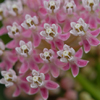
|
Asclepias incarnata 'Cinderella'swamp milkweed
She's the belle of the ball! Sweetly scented with blooms of blush pink, Asclepias incarnata 'Cinderella' from Walters Gardens lasts longer in your garden than her namesake. A perennial with beauty, grace, and staying power, this wetland native does well in average garden conditions and is a pollinator favorite! [
More Info
]
|
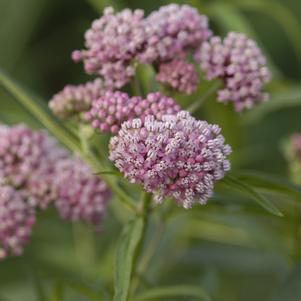
|
Asclepias incarnata 'Ice Ballet'swamp milkweed
A marvelous long-blooming, bright white selection of swamp milkweed. Clear white flowers and dark green foliage make the colors of the hundreds of visiting butterflies glisten in the sunlight.
[
More Info
]
|
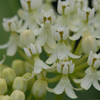
|
Asclepias syriacacommon milkweed
This native classic is best known as a food of larval monarch butterflies (along with its cousins A. incarnata and A. tuberosa). Robust, yet beautiful with deep pink clusters of fragrant flowers in June and July followed by lovely pods of silky seeds in October. [
More Info
]
|
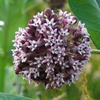
|
Asclepias tuberosabutterfly milkweed
A tough, drought-tolerant native with intense orange flowers in mid to late summer. Attracts many varieties of butterflies and is especially attractive to Monarchs. A beautiful solution for a dry sunny slope! Occurs in dry fields and roadsides in most of the US. [
More Info
]
|
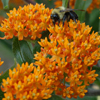
|
Asclepias verticillatahorsetail milkweed, whorled milkweed
A widely adaptable and tough native that is a deer-resistant food for larval butterflies. The fine-textured foliage provides a dark green backdrop for the clusters of white flowers that appear in June and July. [
More Info
]
|
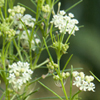
|
Aster 'Wood's Blue'aster
This member of the Wood's Aster group has the typical low rounded habit and profuse blooming associated with all three. 'Wood's Blue' has perfectly clean foliage, and in the early fall it is covered with clear, medium blue flowers with gold centers. Bred for compact habit, long bloom period and heavy flowering, all of the Wood's Asters are outstanding pot crops and should be used far more often as a sturdy perennial alternative for mums. [
More Info
]
|
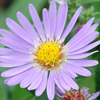
|
Aster 'Wood's Pink'aster
Aster 'Wood's Pink' is virtually mildew and rust free. Like all the Wood's Asters, it is a wonderful container plant, with a compact habit and unstoppable clear pink flowers with gold centers. Bred for compact habit, long bloom period and heavy flowering, all of the Wood's Asters are outstanding pot crops and should be used far more often as a sturdy perennial alternative for mums. [
More Info
]
|
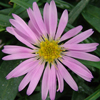
|
Aster 'Wood's Purple'aster
Aster 'Wood's Purple' has perfectly clean foliage, and is loaded with single, clear purple flowers in late summer and early fall. It is slightly earlier than 'Wood's Blue'. Bred for compact habit, long bloom period and heavy flowering, all of the Wood's Asters are outstanding pot crops and should be used far more often as a sturdy perennial alternative for mums. [
More Info
]
|
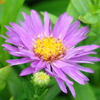
|
Aster cordifoliusblue wood aster
Clouds of blue flowers in early fall in shade! A great naturalizer under trees, at the edge of woods, or as a filler among Hostas and Astilbes, which look pretty rough by September. Found in woods and dry meadows. [
More Info
]
|
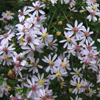
|
Aster cordifolius 'Avondale'blue wood aster
This selection of the native wood aster is a prolific bloomer, carpeting the shade garden with light blue in early fall, when little else blooms and the hostas are in decline. A quick and easy pot crop for fall sales. Beautiful and long-lasting as a filler in autumn flower arrangements! [
More Info
]
|
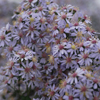
|
Aster divaricatuswhite wood aster
Produces a fairyland of glistening small white daisies in September and October. Lovely when naturalized in shade and average to dry soil. Found in deciduous woods and along roadsides of the Eastern US. [
More Info
]
|
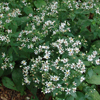
|
Aster divaricatus 'Eastern Star'white wood aster
We have grown this select form anonymously for many years and have deemed it worthy of a name. It is shorter than the species and has deep dark shining mahogany stems. It came our way from Canyon Creek Nursery, via Roger Rache, then of the Berkley Botanic Gardens's Eastern US section. Originally collected from coastal Rhode Island. [
More Info
]
|
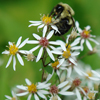
|
Aster ericoides 'Snow Flurry'white heath aster
A very low, dense carpeting groundcover that is smothered with 1/2" single white flowers with gold centers in September. A good strong grower and a totally new look and use for Asters! Makes an excellent container plant. [
More Info
]
|
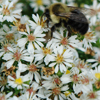
|
Aster laevis 'Bluebird'smooth aster
'Bluebird' is a superlative selection of the native smooth aster introduced by Dr. Richard Lighty of the Mt. Cuba Center. This tall, vase-shaped wildflower has large 1" diameter blue flowers held in cloud-like clusters at the tips of the arching branches. You can pinch back the young shoots in June for denser habit and more flowers, but it is not essential. Staking is helpful by late summer if you forget to pinch. Perfectly clean foliage makes for easy maintenance in production and in the landscape. Aster laevis is a great source of nectar for migrating monarchs and other late season butterflies. Ranked #1 in Mt. Cuba Center's aster evaluations. [
More Info
]
|
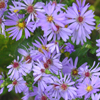
|
Aster lateriflorus 'Lady in Black'calico aster
Who can resist plants with great names? Aster 'Lady in Black' is an elegant 3-4' mound of purplish-black strappy leaves smothered in red-centered tiny white daisies in late summer and early fall. A stronger, more statuesque sister of Aster 'Prince' that will thrive in average soil in sun or part shade, but shows best foliage coloration in full sun. Thousands of flowers per plant—a butterfly's dream! [
More Info
]
|
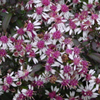
|
Aster novae-angliaeNew England aster
Blooms ranging from blue-purple to lavender-pink pop in the late summer and fall landscape. A large, showy native aster that is a must-have autumn nectar source for pollinators. [
More Info
]
|
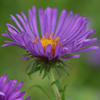
|
Aster novae-angliae 'Grape Crush' PP33612New England Aster
'Grape Crush' is a deep purple New England aster introduction by Walters Gardens. Growing into a neat mound 30" high by 40" wide, this fall blooming aster does not splay open as other aster cultivars can, providing a beautiful profusion of saturated flowers for a great fall display. [
More Info
]
|
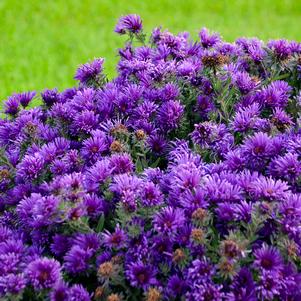
|
Aster novae-angliae 'Pink Crush' PP33628New England Aster
A dark pink fall-blooming aster with a tidy habit and smothered in flowers? Oh man, we think we may have developed a crush. A 'Pink Crush' that is. An introduction from Walters Gardens, this New England aster is a shorter variety that doesn't splay in the late season like other aster cultivars. [
More Info
]
|
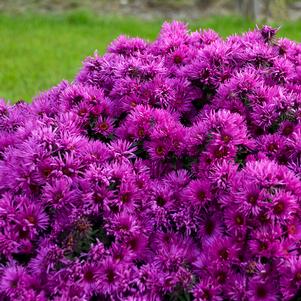
|
Aster novae-angliae 'Purple Dome'New England aster
A naturally compact form with deep purple flowers in August and September. Eye-popping with Solidago 'Golden Fleece'. One of the most garden-worthy native selections out there. A fine introduction from the Mt. Cuba Center. [
More Info
]
|
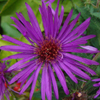
|
Aster novae-angliae 'Vibrant Dome' PP19538New England aster
Vibrant, hot-pink, star-shaped flowers with yellow center accents adorn lance-shaped green foliage through autumn. The compact, mounding habit of this sport of Aster 'Purple Dome' has proven mildew resistance. Reaching between 18 and 20 inches, 'Vibrant Dome' performs best in fertile, well-drained soil in full sun to part shade. A beautiful performer for late season color. [
More Info
]
|
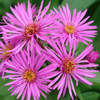
|
Aster novi-belgiiNew York aster
Local Mid-Atlantic native of moist to wet meadows. Flowers may vary in shades of pink, purple and white and bloom in early fall, which is late August and early September here in PA. [
More Info
]
|
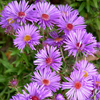
|
Aster oblongifolius 'October Skies'aromatic aster
Shorter, bushier, bluer sister of 'Raydon's Favorite'. A strong growing low mound of bushy foliage covered in lavender blue flowers in mid fall. Highly tolerant of drought and poor soils. This Primrose Path introduction has excellent groundcover potential.
[
More Info
]
|
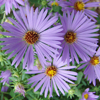
|
Aster oblongifolius 'Raydon's Favorite'aromatic aster
Medium blue, fine textured single ray flowers in September and October, aromatic foliage. Irresistable, a really tremendous plant. Introduced by Holbrook Farm. [
More Info
]
|
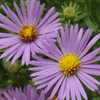
|
Aster tataricus 'Jindai'tatarian daisy
Large leaves (to 2') emerge in the spring and provide a bold backdrop for earlier blooming perennials. In the fall, numerous flower stalks rise to 4 or 5 feet and each is covered with 1" sky blue daisy-like flowers. Flowering is later than many other asters and this species often provides brilliant color until frost. Found by Rick Darke and Skip March at the Jindai Botanical Gardens. This cultivar is shorter than the species and less likely to require staking. [
More Info
]
|
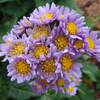
|
Asteromea mongolicaJapanese aster
Tough and easy to grow, this enchanting aster cousin is covered in hundreds of double white flowers from mid-summer to frost. Undemanding by nature, it is ideal for most any sunny garden spot and is a great container plant. Fantastic flower in arrangements too! [
More Info
]
|
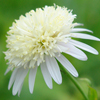
|

